Service dogs play an important role in the lives of many people with disabilities, acting as their eyes, ears, and lifeline. You should treat these highly trained animals with the utmost respect and care, as they are not your average pet.
Unfortunately, many public members are unaware of the proper etiquette and laws surrounding service dogs, leading to various problems for the dog and its handler. The temptation to pet or interact with a service dog can actually be detrimental to the animal’s training and ability to perform its duties. We’ll explore why service dogs can’t be pets and guide the public in interacting with these special animals. We will discuss the different types of service dogs, their training process, and the laws that protect them.
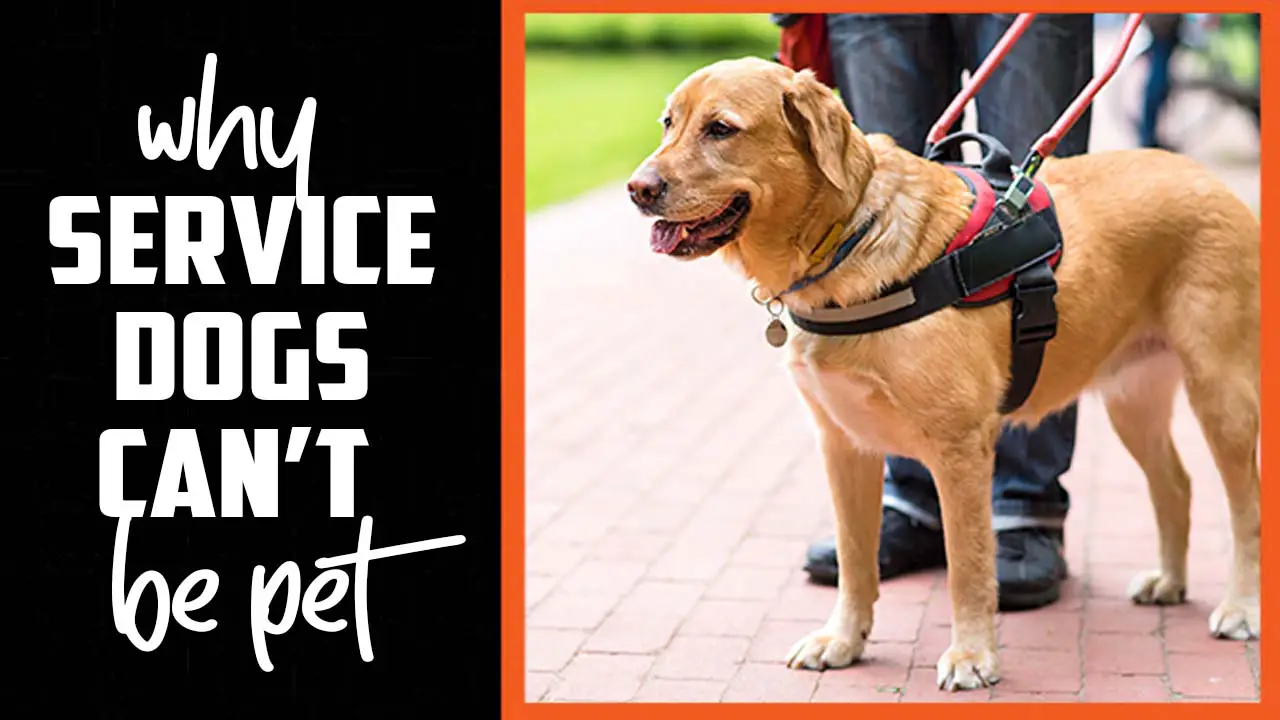
Why Service Dogs Can’t Be Pet 3 Surprising Reasons
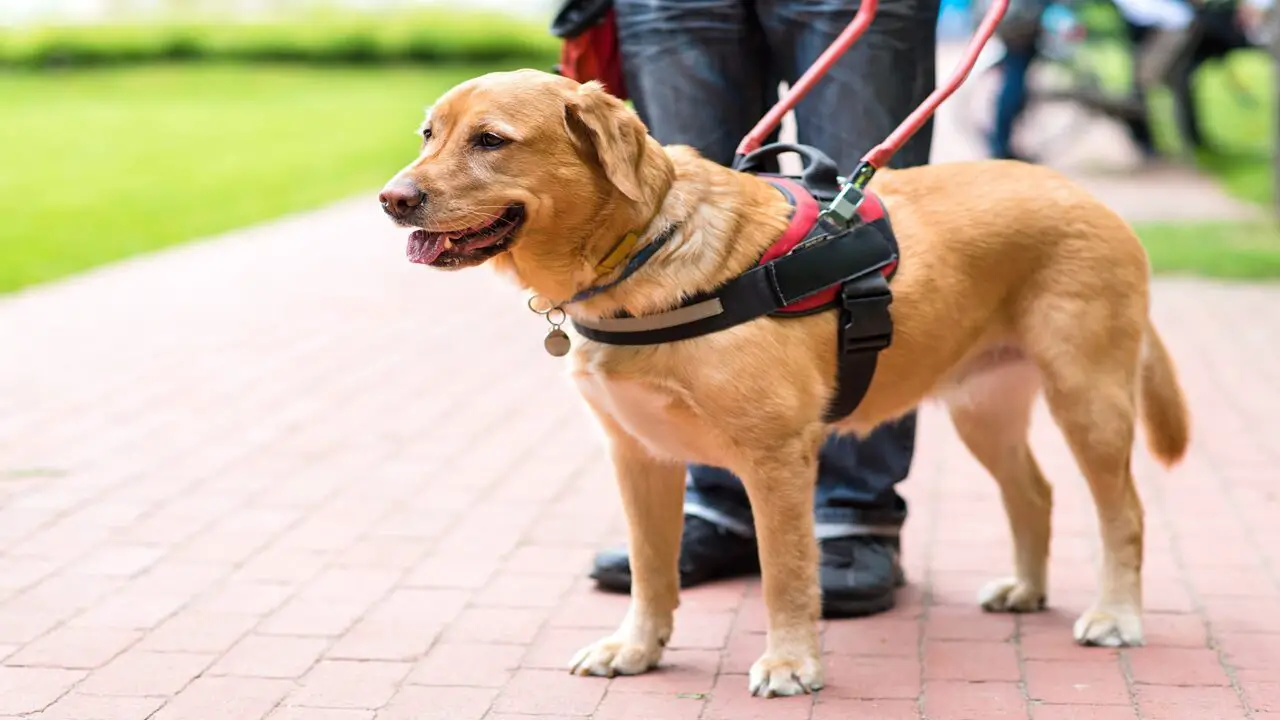
There are three surprising reasons why service dogs can’t be pets. Service dogs undergo extensive training to perform specific tasks for their handlers. Petting or distracting them can interfere with their ability to focus on their handler’s needs. While it may be tempting to pet a service dog when you see one, several surprising reasons exist behind this rule.
It’s Distracting
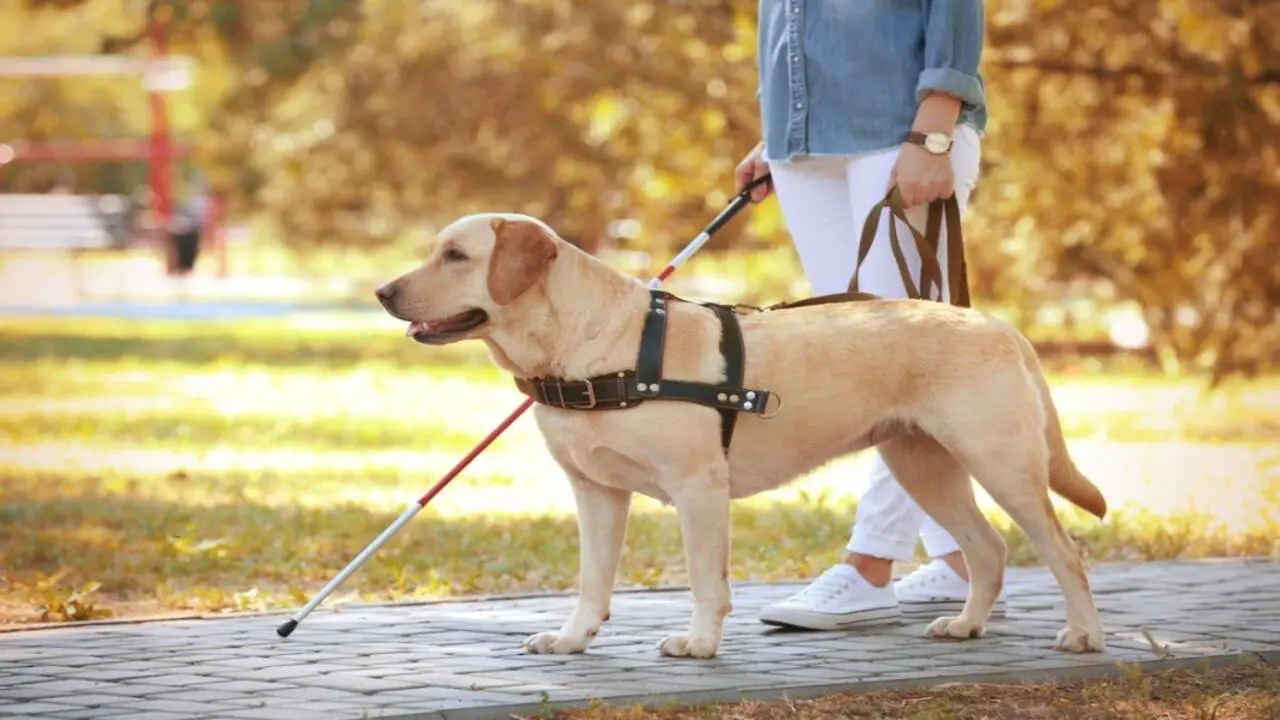
Regarding service dogs, it’s important to remember that they have important tasks and responsibilities. Petting them can be distracting and disrupt their concentration. Interacting with these dogs can interfere with their ability to perform essential tasks and assist their handler because they are trained to focus on their needs. To ensure that service dogs can carry out their duties effectively, it’s best to avoid petting them without permission. By respecting their role as working dogs, we can give them the space they need to fulfil their responsibilities.
It Interferes With Their Senses
Petting a service dog can be tempting, but resisting the urge is important. Service dogs rely on their senses to alert their handlers to potential dangers or medical issues. When you pet a service dog, you distract them from their important tasks and compromise their ability to perform their duties effectively.
Trainers specifically train these dogs to focus on their handler’s needs, and any interference can disrupt their concentration. So, it’s crucial to remember that you should treat service dogs with respect as working animals. Interacting with them can have unintended consequences and may put their handler at risk.
It’s Disrespectful (And Illegal)
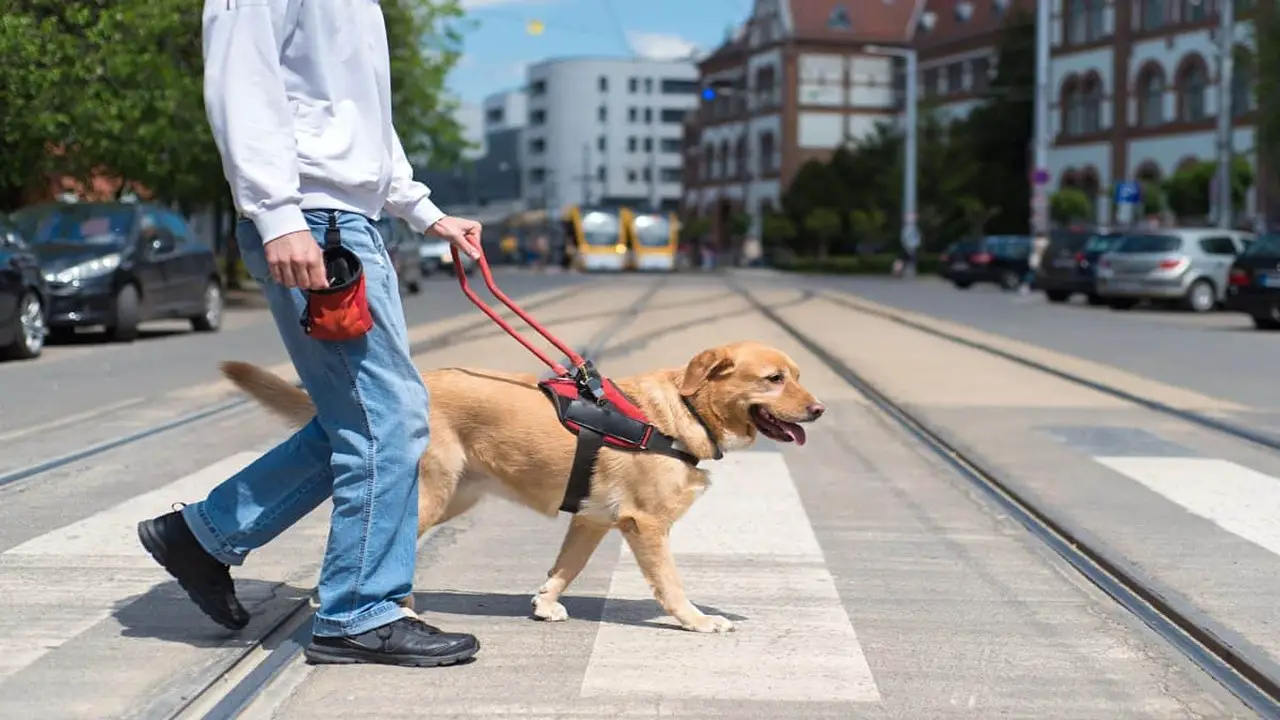
Petting a service dog is not only disrespectful but also illegal. Service dogs undergo extensive training to focus on their handler’s needs, and any distraction can compromise their important tasks. Interfering with a service dog’s work puts the handler’s safety and well-being at risk and goes against the law. Remember that service dogs are working animals, and treat them with respect. It is best to admire them from a distance and refrain from petting or interfering with their duties.
Roles And Responsibilities Of Service Dogs
Service dogs play a crucial role in assisting individuals with disabilities. These highly trained dogs are responsible for performing specific tasks that help their handlers navigate daily life. Distractions can interfere with their ability to focus on their job, so it’s essential to refrain from petting them without permission.
Service dogs have strict working schedules and must always focus on their handler’s needs. Interacting with a service dog can confuse them between work and play, impacting their ability to assist their handler effectively. It is essential to respect the service dog’s role and allow them to fulfil their duties without unnecessary distractions.
The Importance Of Not Petting Service Dogs
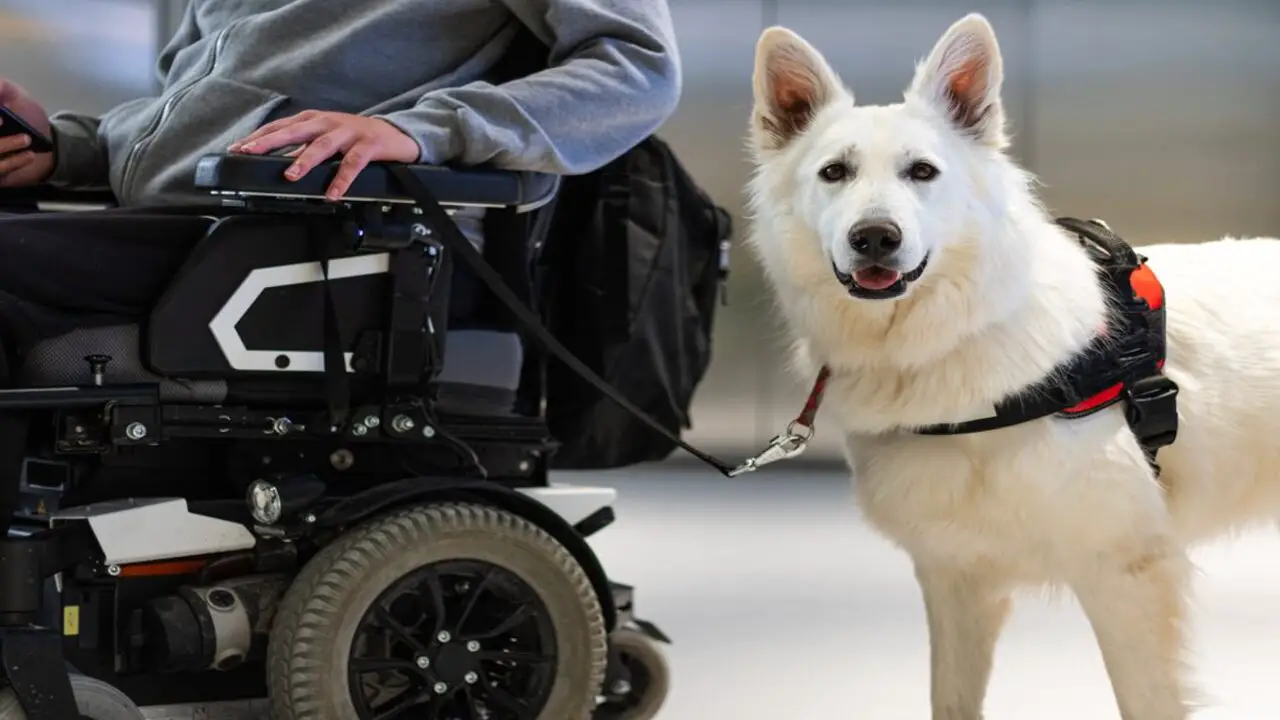
It is important to understand why you should not pet service dogs, as they are crucial in assisting individuals with disabilities. Trainers train these dogs to stay focused on their tasks, and any form of distraction can interfere with their ability to perform their duties effectively. Petting a service dog without the owner’s permission can cause stress or anxiety for the dog and the handler.
Treating service dogs respectfully and professionally ensures they can fulfill their responsibilities without unnecessary interference. Educating the public about the role and responsibilities of service dogs is key to maintaining their effectiveness in assisting individuals with disabilities.
How Petting Can Distract A Service Dog From Its Duty
While it may be tempting to pet a service dog when you see one, it’s important to remember that these dogs are working and have an important job to do. Petting a service dog can distract them from their duties and hinder their ability to assist their handler. These dogs undergo extensive training to learn specific tasks and behaviors that help individuals with disabilities navigate their daily lives.
Petting a service dog diverts attention from its handler, potentially disrupting its training and focus. It’s crucial to respect the working relationship between a service dog and its handler by refraining from petting or interacting with them without permission.
Proper Way To Engage With Service Dogs
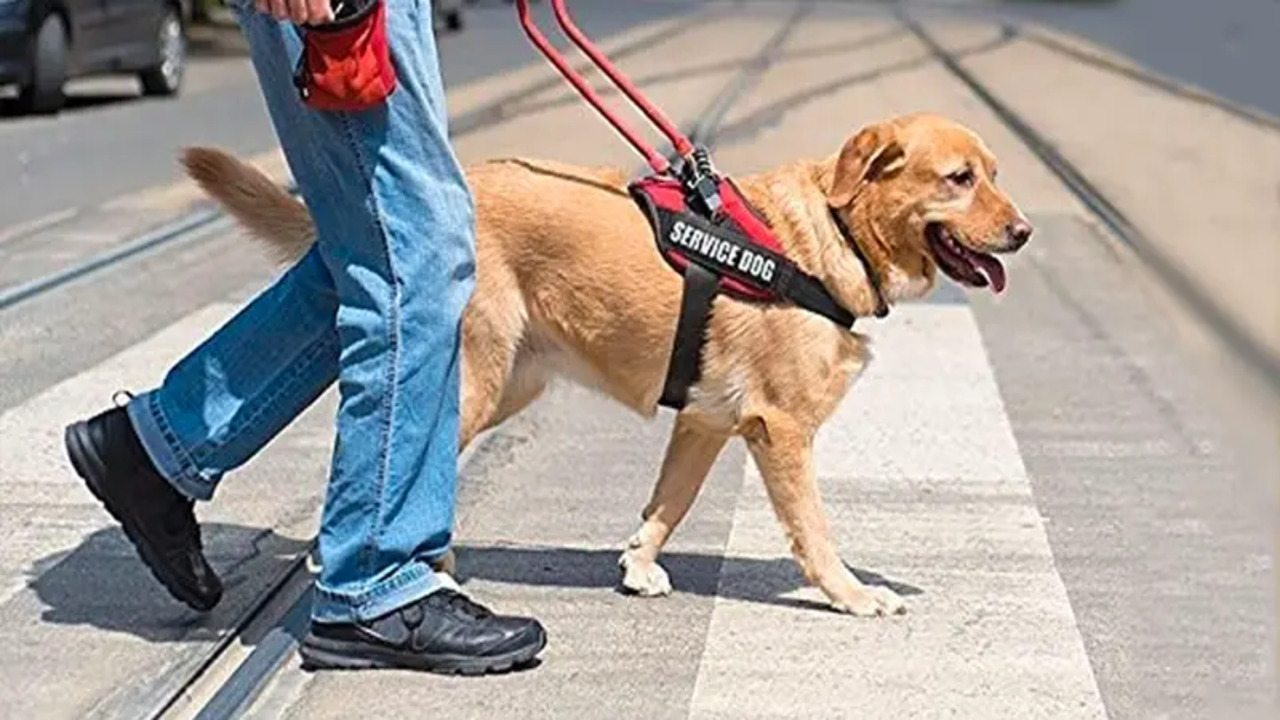
When encountering a service dog, remember they are working and should not be treated as pets. Service dogs are highly trained to assist individuals with disabilities, and any distraction can hinder their ability to perform their tasks effectively. To engage with a service dog properly, it is best to follow these guidelines:
- Always ask for permission: Before approaching or interacting with a service dog, ask the handler for permission. They may have specific instructions on how to interact with their dog.
- Respect boundaries: Avoid petting, making eye contact, or talking to the service dog without the handler’s approval. These actions can distract the dog from its duties.
- Keep your distance: Maintain a respectful distance from the service dog and avoid making sudden movements or loud noises that could startle them.
- Be patient and understanding: Service dogs may need to always focus on their handler’s needs. Understand that they provide essential assistance and avoid distractions that compromise their work.
By following these guidelines, you can respect the service dog and its handler while ensuring they can perform their vital tasks uninterrupted.
Recognizing A Service Dog
Highly trained working animals assist individuals with disabilities by performing specific tasks. They are popular as service dogs. It is crucial to recognize and respect the role of a service dog by refraining from any distractions or interactions while on duty. By interfering with their work, we hinder their ability to carry out important tasks that support their handler’s well-being.
When encountering a service dog in public. It is best to ignore them and give them the space to perform their job effectively. Understanding and respecting the role of service dogs creates an inclusive and accessible environment for individuals with disabilities.
Identifying Marks Of A Service Dog
You can often identify service dogs by their special attire, such as a vest or harness that clearly indicates their role as a service animal. Additionally, they may have official identification cards or tags to further establish their status.
The public should understand that service dogs are working and should not distract or interact with them while on duty. The trainers train these dogs to focus solely on their handler and specific tasks rather than seeking attention from others. Respecting the space and boundaries of a service dog team is essential for their functionality and the well-being of their human partner.
Scenarios Where Petting Is Allowed
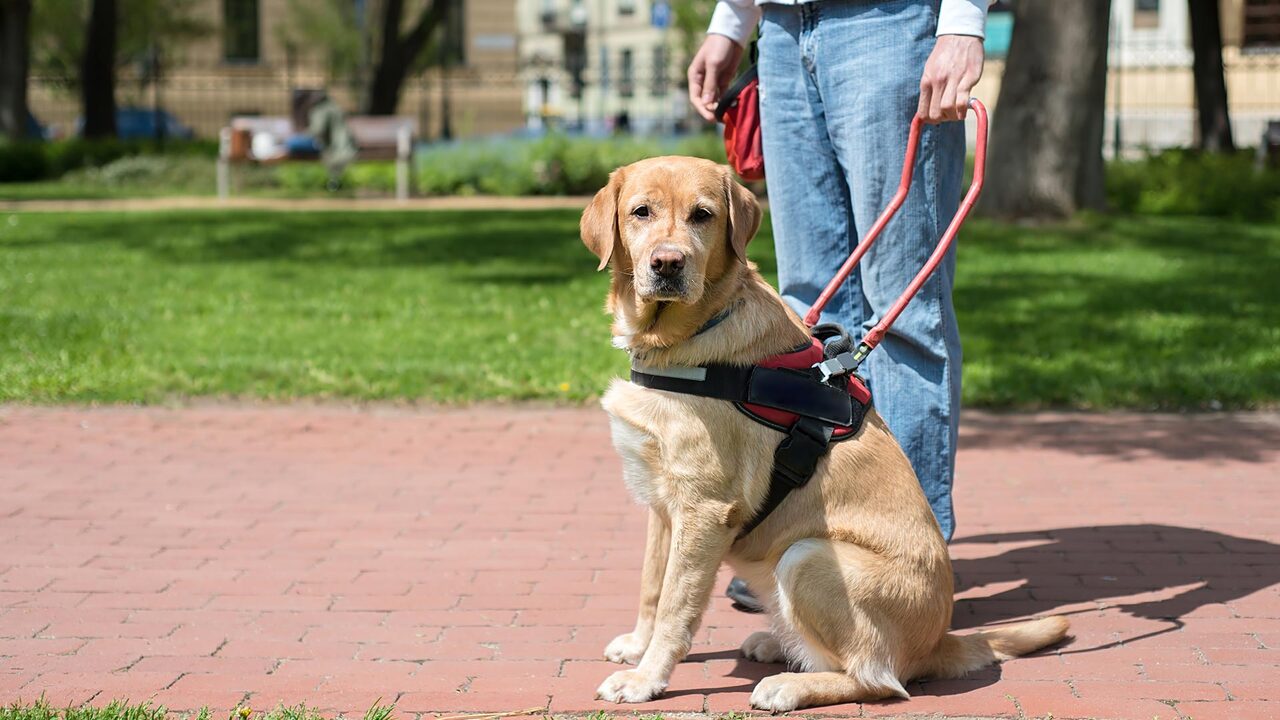
There are specific scenarios where petting a service dog is permitted. One such scenario is when the service dog is off-duty and in a relaxed environment. In these instances, they are not focused on their tasks and can enjoy some interaction. Additionally, it is acceptable if the handler explicitly permits petting the dog.
Designated “meet and greet” areas at events or facilities are also suitable for petting service dogs. However, obtaining consent from the handler and ensuring that the dog is not distracted from its duties is crucial. Finally, if the dog initiates contact by approaching and seeking attention, it may be appropriate to pet them.
Conclusion
It is important to understand that service dogs are crucial in assisting individuals with disabilities and should not be treated like regular pets. Petting or interacting with a service dog can be distracting, interfere with their senses, and even be disrespectful and illegal. Service dogs are highly trained to perform specific tasks, and any interruption can put their handler’s safety at risk. Respecting the roles and responsibilities of service dogs and their handlers is vital.
If you see a service dog in public, it is best to give them space and not engage with them unless permitted by their handler. By recognizing and respecting the importance of not petting service dogs, we can create a more inclusive and supportive environment for individuals who rely on these amazing animals. We hope you now understand Why Service Dogs Can’t Be Pet.
Frequently Asked Questions
1.Why Do Service Dogs Say Do Not Pet?
Ans: Service dogs say “do not pet” because they are highly trained working animals focused on assisting individuals with disabilities. Petting can distract them from their job and hinder their ability to help their handlers. Respecting their boundaries is crucial for their effectiveness.
2.Can Service Dogs Cuddle?
Ans: Service dogs train to prioritize their tasks and remain focused on their handlers’ needs. Cuddling or petting a service dog can distract them from their important duties, potentially putting the dog and the handler at risk. It is crucial to respect their boundaries and allow them to perform their jobs without distractions.
3.Why Can’t You Pet A Police Dog?
Ans: Petting a police dog is prohibited because they are highly trained working animals with specific tasks. It can distract them from their duties and compromise their training. Approaching or petting a police dog without permission can also pose a safety risk to both the individual and the dog.
4.What Should You Not Say To A Service Dog?
Ans: It’s important to remember these guidelines when interacting with service dogs:
- Always ask the handler for permission before approaching or distracting the dog.
- Avoid sudden noises or gestures that may startle the dog.
- Refrain from calling or coaxing the dog away from its handler.
- Respect privacy by not asking intrusive questions about the person’s disability.
5.Why Is It Important Not To Pet Or Distract A Service Dog?
Ans: Petting or distracting a service dog can disrupt its focus and put its handler in danger. It also hinders the dog’s training and effectiveness. Respecting the working relationship between a service dog and its handler means refraining from petting or distracting them.